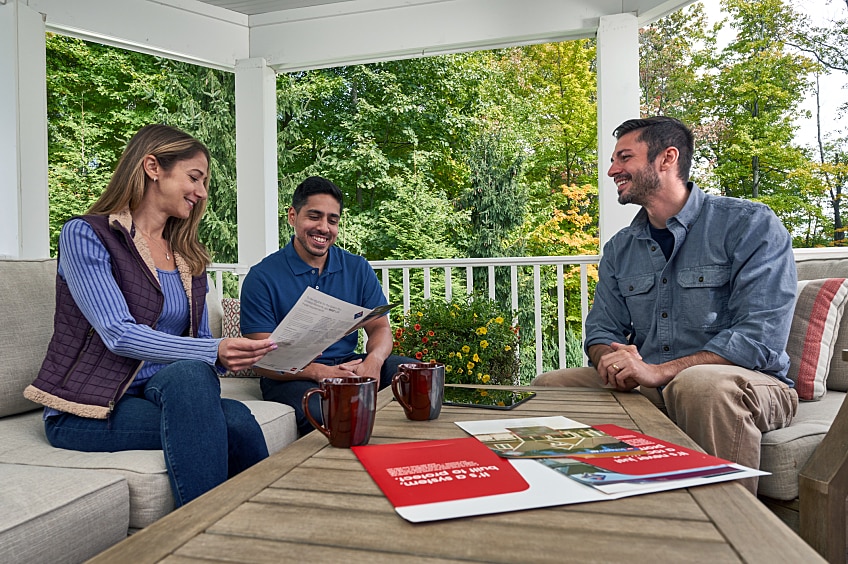The insurance landscape is changing dramatically—and that's having an impact on your homeowners' ability to afford vital roofing projects. That, in turn, affects you and your business. Here are three major home insurance trends that are impacting the affordability of new roofs, along with some of the things you, as a roofer, can do to adjust.
Trend 1: Rising Deductibles
Remember the good old days when a typical roofing customer would face a $500 deductible and have Replacement Cost Value (cost to replace at today's prices) coverage? Those days appear to be long gone. In fact, a 2%-of-home-value deductible has become the standard in many markets and some carriers are requiring deductibles as high as 5%. Let's do the math on that: A home with an insured value of $500,000 could have a deductible between $10,000 and $25,000.
The culprit could be climate change, inflation, materials costs, risk aversion, homeowner choice (larger deductible = lower premium), or—most likely—a combination of all of the above. But regardless of why it's happening, insurance deductibles are steadily climbing, making it more challenging for the ordinary homeowner to recover from storm damage with a roof replacement.
Trend 2: "Basic" Endorsements and Bare-Bones Policies
One way insurance carriers are trying to contain the overall cost of insurance is by simply reducing what the policy covers. Some are creating a "basic" endorsement, or bare-bones policy, which often removes coverage for metal, excludes code upgrades, includes cosmetic waivers, and limits the ability to match the shingle style and color. Here's what that means in practical terms:
Metal: Hail damage to metal roofs and gutters may not be covered unless the metal is punctured. As you know, metal is found all over the building exterior, from roof accessories to gutters, and chimney flashing to window trim.
Code Upgrades: Traditionally, additional materials and labor related to city and state code upgrades have been covered. That may not be the case with bare bones policies; confirm coverage and discuss the implications with your homeowner before making these upgrades.
Cosmetic Waiver: Homeowners policies are more frequently including cosmetic waivers, which means they will only be able to get coverage if the functional use of the roofing system is degraded.
Limited Color Matching: In some policies, a homeowner may elect to have limited matching coverage. For example, a match may only be considered for a single slope or plane over the roof versus the policy providing coverage to make the entire roof match. These policies usually differ by state.
Trend 3: Roof Age Restrictions
As previously mentioned, Replacement Cost Value policies are becoming less common, as many carriers are opting to offer Actual Cash Value-only policies. When coupled with the skyrocketing deductible challenge, ACV policies may leave the roof effectively underinsured.
There are a few twists here that are of particular importance to roofers and homeowners:
One exception to this home insurance trend is that homeowners may still be able to secure Replacement Cost Value coverage on newer roofs.
Also, insurers are increasingly paying only Actual Cash Value on roofs that are past a certain age. The challenge here is that many homeowners do not actually know the age of their roof, and yet the burden of proof is on them. A good insurance company may use aerial imagery to help the homeowner identify the age and relative condition of the roof.
What Can Contractors Do?
Because of the growing size of deductibles and decrease in average personal savings, financing will play an increasingly important role in your ability to serve your customers. Knowledge is key here: The homeowner should know as much as they can about both their homeowners policy and their home itself.
Your first step to assist with this is to have a conversation about insurance with your homeowner. Advise them to read their insurance policy thoroughly, so they understand their coverage and can brace themselves against sticker shock.
If the age of the roof appears to be an issue, or there's a gap in knowledge about the home's history or roof condition, you could help the homeowner gain a better understanding by ordering an address-specific GAF QuickSite Report. It includes a 10-year weather history, aerial-imagery AI-driven roof assessment, property parcel data, and—if available—permit histories that may tell the story of home improvements including re-roofs.
Perhaps the most important step is to offer a flexible financing option that suits their situation.
GAF SmartMoney powered by Payzer empowers you to offer loans from multiple issuers, including Second Look financing.
Green Sky, trusted by thousands of US contractors, offers deferred interest plans and credit limits up to $100,000, and is backed by Goldman Sachs.
To help increase your homeowners' purchasing power, so they can say yes with confidence, find out more about these financing programs today.

